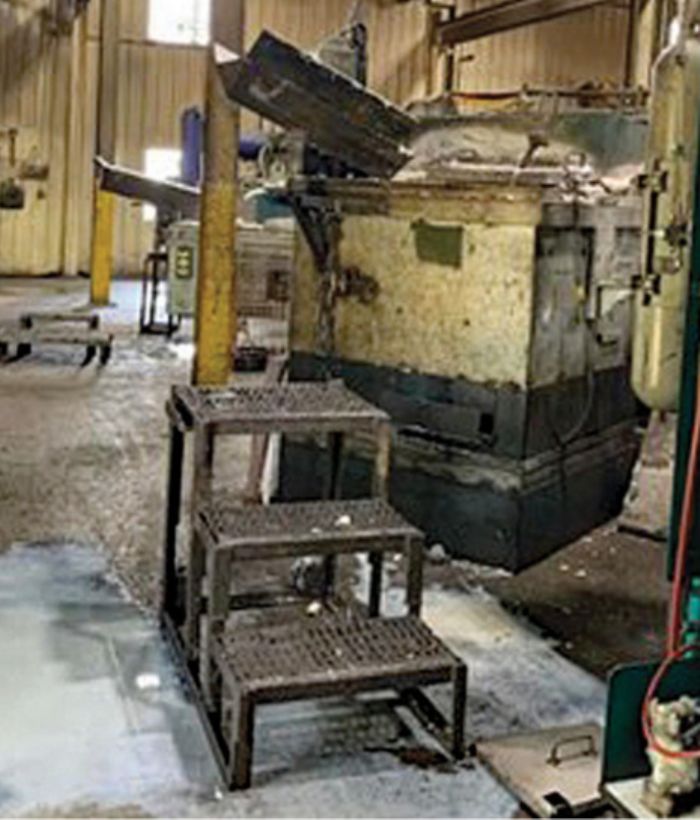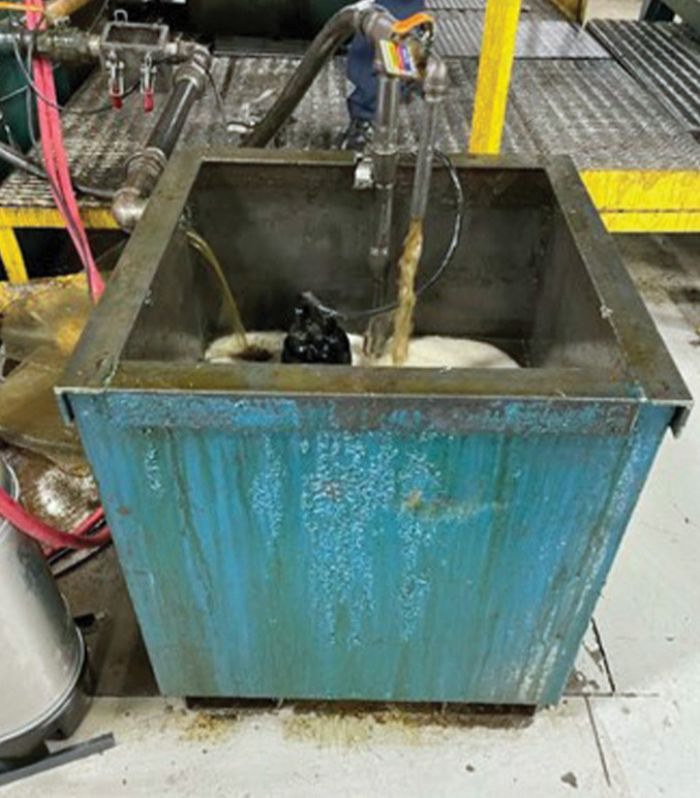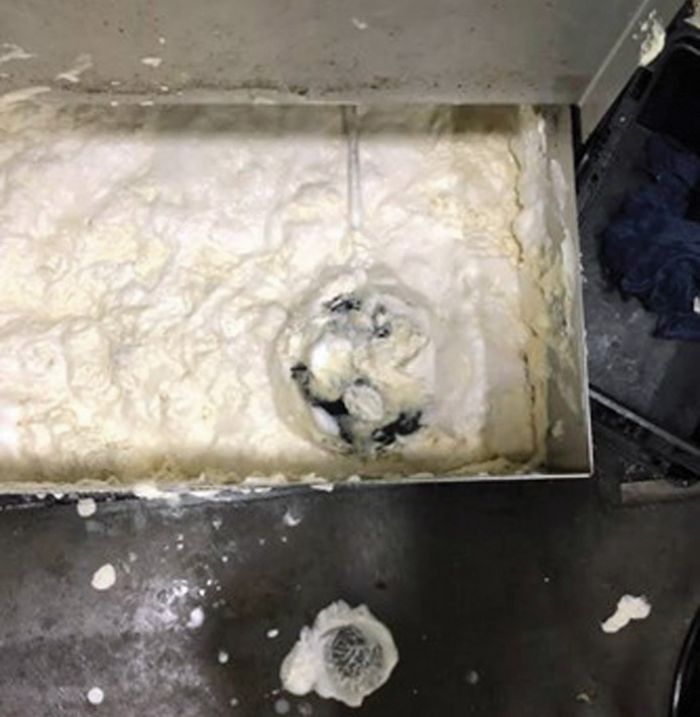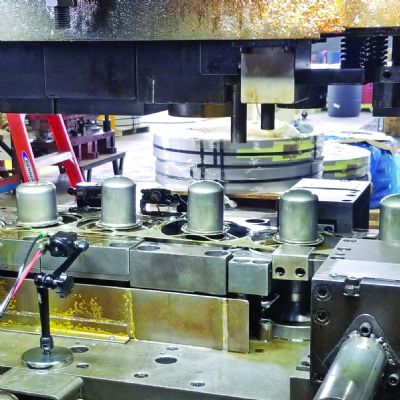Lubricant Ratio and Proper Use Help Eliminate Waste
The proper use of lubrication in the pressroom can affect each of the three scopes and deliver quick and effective improvements to your ESG reporting. The emission of excess gases (Scope 1) can result directly from using the incorrect lubricant, an improper dilution ratio, excessively applied lube or inaccurate lubricant placement, which ends up burning off into the atmosphere or being hauled away as waste.
 If you can’t remember when you last changed lubricants, consider meeting with your lubricant supplier to help determine the best choice for every part that you manufacture. One size often does not fit all, and the optimal lubricant and application process can vary.
If you can’t remember when you last changed lubricants, consider meeting with your lubricant supplier to help determine the best choice for every part that you manufacture. One size often does not fit all, and the optimal lubricant and application process can vary.
If using a graphite mixture or oil-based product, consider switching to a synthetic or semisynthetic lubricant for easier disposal. This search may include establishing a dilution ratio for the lubricant that better improves the stamping process. Here, proportional mixing machines provide a productive and consistent means of creating a uniform formula. Even the process used to stir the mixture is important, as excessive agitation can degrade the lubricant.
With the proper lubricant selected and the ratio of lube and water optimized, consistently test the mixture throughout a shift, a day, a week, a batch or even from operator to operator, to ensure that improvements are being realized. Testing the lubricant and its application should take place not only from the mixing device or holding tank, but also from the spray nozzle to confirm proper delivery to the workpiece material. Different testing methods include use of refractometers, moisture-balance analyzers and hydrometers.
Also, consider using evaporators to eliminate waste lubricants—another area of GHG emissions. In addition, a reclamation system allows metal formers to reuse at least a portion of the lubricant and helps to improve efficiency and minimize waste haul. This will reduce overall emissions and boost your ESG score.
Synthetics work well in reclamation, and many are available. Prior to purchase of any lubricant, a metal former should inform the lubricant supplier of its desire to reclaim and reuse. This will allow the supplier to include the proper biocide additives to minimize biological growth, which can prove harmful to the product and to the people using it.
Importance of Delivery Systems to Reduce Emissions
The delivery and application of lubricants also impacts Scope 1 emissions. Tour your shop floor and identify misplaced lubricant—puddles on the floor or on machinery, and excess spray in the air, for example. Making improvements in these areas can substantially reduce lube consumption and lower your carbon footprint.
Spray nozzles can help ensure precise lubricant application as they can regulate the amount of lubricant and alter the shape of the spray. Pinpointing spray location can minimize overuse and ensure proper functionality. In addition, a state-of-the-art delivery system automatically manages spray timing and volume, and allows storing of the process recipe by part number to ensure repeatable processes. As many as 24 nozzles can be programmed independently to deliver lube and air, or even skip cycles on these systems.
These recipes can be password-protected to eliminate any potential of unauthorized adjustments by operators. Operators often will adjust lube-system parameters to increase spray volume when parts do not properly form or fail to release from the die. However, in many cases close examination of the process may indicate the real cause of the issues: an improper dilution ratio or a nozzle failing to spray correctly.
Also, consider that nozzles often become obstructed due to lack of maintenance. Be sure to regularly purge the lines and nozzles. Also, use flow meters to aid in indicating under or over utilization of lube. If using a water-based lubricant, have your water tested for hardness to prevent a buildup of calcium, which will restrict line size, cause volume issues and potentially block lubricant dispensing.
Automate Lubrication for Precise Spraying
Application automation also helps metal formers ensure consistent lubricant application. While many facilities still task their operators with hand-spraying lubricant into their dies, having operators spend long hours working press-side only equates to over or under coverage—and very tired arms. Although not covered by these three GHG scopes, worker safety and well-being is an ESG initiative.
One popular automation solution: a reciprocator machine, which extends the lubricating nozzle into the die area and accurately layers the target zone with lube. It even can blow air separately to remove debris. Another option: Outfit a robot or cobot with a nozzle or a manifold loaded with a host of spray tips for precise lubricant application. A robot or cobot can manipulate the spray nozzle or manifold as a human would, and part-specific programs can be stored for future use.
Metal formers also can improve application use with a roll-coating machine, ideal for many applications as these apply lubricant evenly and thoroughly onto a coil or blank, and minimize lubricant use. Overall, Scope 1 improvements can be linked directly to reduced lubricant use without compromising production performance.
Improving ESG Scope 2 Emissions
…focuses on reducing general power consumption. The purpose of lubrication is to reduce friction, which can cause unnecessary force or delays in the process when parts stick to dies. The proper lubricant and application enhance both issues and also can help reduce power consumption.
A much-neglected source of power is the use of a pressured air supply via a compressor. The demand for air in plants always comes at a premium and often shops will want to add extra compressors. However, this comes at the high cost of power and investment. Again, using the correct lube and dilution ratio, and application process, will minimize the amount of air required.
Also, with regards to Scope 3, when supplying parts to a company that measures its ESG performance, suppliers represent their biggest target for improvement. This includes freight, and, again, proper dilution and lubricant application can lower these costs. Optimizing dilution ratio means less lube, fewer incoming shipments and less waste hauling.
Reclamation of Lubricants for Additional Savings
Reclaiming lubricants instead of disposing makes environmental and economic sense. Purification systems suited for hydrocarbon oils are known for reducing lubrication requirements by as much as 70 percent while reducing machine downtime. The ideal system doesn’t use absorbents, rather it relies on the buoyancy of oil droplets, helping eliminate disposal issues to provide a definite ESG improvement.
To begin your journey to GHG improvement, set the baseline and capture important KPIs:
- Required dilution ratio
- Current dilution ratios throughout the facility
- Present lubricant usage via flow meter totalizer
- Cost of mixed lubricant at each machine
- Total water usage
- Energy consumption (kW)
- Freight charges for lubricants
- Waste haul expenses.
No one likes EPA mandates. However, this new sustainability-reporting mechanism for lubricants presents opportunities to generate new cost savings, while gaining a competitive advantage. MF
See also: Industrial Innovations, Inc.
Technologies: Lubrication
 Given the upcoming changes from the EPA placed on large companies and OEMs, the answer is, “Yes.” These initiatives very well could provide companies a big competitive advantage as sustainability improvements nearly always provide cost savings.
Given the upcoming changes from the EPA placed on large companies and OEMs, the answer is, “Yes.” These initiatives very well could provide companies a big competitive advantage as sustainability improvements nearly always provide cost savings. Scope 2—Emissions generated indirectly from the generation of purchased energy, including emissions resulting from the generation of electricity, heat or steam purchased from a utility provider.
Scope 2—Emissions generated indirectly from the generation of purchased energy, including emissions resulting from the generation of electricity, heat or steam purchased from a utility provider.






 If you can’t remember when you last changed lubricants, consider meeting with your lubricant supplier to help determine the best choice for every part that you manufacture. One size often does not fit all, and the optimal lubricant and application process can vary.
If you can’t remember when you last changed lubricants, consider meeting with your lubricant supplier to help determine the best choice for every part that you manufacture. One size often does not fit all, and the optimal lubricant and application process can vary. 
 Video
Video
 Webinar
Webinar